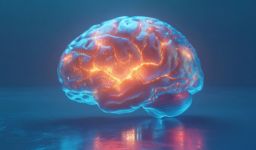
Acquired Brain Injury (ABI) Care - NEW
Cost: £10.00
Welcome to our Acquired Brain Injury (ABI) Care Online Training Module. Upon completion, you will receive a certificate of completion. The course duration is approximately 1 hour and will earn you 1 CPD point. You have 6 months from the date of purchase to finish this training.Acquired Brain Injury (ABI) Care
Course Duration: 1 Hour
1. What is (ABI) Acquired Brain Injury
Micro-lecture
• ABI is any injury to the brain after birth. Traumatic causes include falls, assaults and road traffic incidents. Non-traumatic causes include stroke, hypoxia, infection, toxins and tumours.
• Early management of head injury follows NICE NG232.
Activity
Two short scenarios: a fall with possible head strike in a care home, and a resident with new confusion after hypoglycaemia. Identify information to gather and first actions.
2. Red flags and escalation
Urgent action indicators
• Drop in GCS, worsening headache, repeated vomiting, seizure, focal neurological deficit, new confusion, skull fracture signs, high-risk mechanism, anticoagulant or antiplatelet use. Call 999 or follow your emergency pathway.
Care-home focus
• After any head strike, follow your neuro-observation protocol and document. If on anticoagulants or antiplatelets, seek clinical advice even if symptoms seem mild.
Downloadable for your LMS
• Neuro-observation chart and 24-hour monitoring plan template
• SBAR handover pocket card
3. Common effects of (ABI) Acquired Brain Injury
At a glance
• Physical: balance problems, weakness, fatigue, headache, dizziness, dysphagia, seizures
• Cognitive: attention, memory, processing speed, planning
• Communication: aphasia, dysarthria, word-finding problems
• Behaviour and emotion: agitation, irritability, low mood, disinhibition, apathy
Care strategies
• Keep instructions short, allow processing time, use written cues, reduce noise, grade tasks.
• Report new or escalating behaviours. Rule out pain, infection, constipation, and medication side effects.
• For swallowing concerns, sit upright for meals, follow prescribed textures only, refer to Speech and Language Therapy.
4. Rehabilitation basics in community and care-home settings
Principles
• Rehabilitation is goal oriented, person centred and delivered by the MDT over time. Community rehabilitation should be timely and coordinated in line with NICE NG211.
What support workers do daily
• Reinforce therapy goals during everyday care.
• Encourage safe mobility and independence with ADLs.
• Use consistent cueing, aids and routines.
Pathways
• Know local neuro rehab teams, Stroke ESD, community OT and Physio, Speech and Language Therapy and Neuropsychology referral routes.
• For prolonged disorders of consciousness or complex needs, follow Royal College of Physicians national guidance and involve specialist services.
5. Person-centred care planning and CQC alignment
• Tailor care to needs and preferences, involve families, and make sure staff are competent.
• Link plans to what matters to the person, not just diagnosis.
• Record reasonable adjustments, communication preferences and capacity decisions.
• Keep evidence of training, supervision and competency sign-off for ABI-related tasks.
6. Risk assessment in care homes
• Key risks: falls, pressure damage, seizures, aspiration, wandering, fatigue.
• Define clear triggers to pause an activity and seek clinical review.
• Review medicines that raise risk such as antiepileptics, anticoagulants and sedatives.
7. Communication, behaviour and de-escalation
• Use a calm tone. Give one step at a time. Offer simple choices. Avoid confrontation.
• Keep a triggers and early warning signs log.
• Create short positive behaviour support plans with ready-to-use staff prompts.
8. Legal and ethical essentials
• Mental Capacity Act 2005: presume capacity, support decision making, assess capacity for each decision and time, and make best-interest decisions with family and advocates when needed.
• Safeguarding Adults: recognise abuse or neglect and report using local procedures.
• Duty of Candour: be open and honest after incidents.
• Information governance: share on a need-to-know basis in the person’s best interests.
9. Documentation and outcome measures
• Use SBAR for handover.
• Common measures: Barthel Index, Modified Rankin Scale, SMART goals, Goal Attainment Scaling.
• Keep records factual, timed, signed and include what was taught and how the person responded.
10. Working with families and carers
• Offer clear tips and realistic timelines.
• Signpost to national and local brain injury charities and support groups.
• Involve families in reviews and goal setting.
Learning outcomes
1. Define ABI and distinguish traumatic and non-traumatic causes.
2. Spot red flags after a head injury and escalate using local pathways and NICE thresholds based on NICE NG232 Head injury.
3. Describe physical, cognitive, communication and behavioural effects and their impact in care settings.
4. Apply person-centred care planning and risk assessment that meet CQC Fundamental Standards.
5. Support rehabilitation goals and community pathways based on NICE NG211 Rehabilitation after traumatic injury.
6. Work within the Mental Capacity Act, consent, duty of candour, and safeguarding requirements.
7. Document clearly using SBAR and agreed outcome measures.
8. Map everyday practice to Skills for Health Core Skills Training Framework subjects.
We hope you find this module informative and beneficial for your professional development in Acquired Brain Injury (ABI) Care.
If you need more information about this course, please contact Train Healthcare directly at 0208 3266 704 or email contact@trainhealthcare.com.
Please note that refunds are not available for online training purchases.
Nursing and Midwife Council's (CPD Points).
Requirements:
It is necessary to complete 35 hours (35 Nursing CPD Points) of relevant CPD within the three-year period since your last registration renewal or since joining the register.
Of these 35 hours (35 Nursing CPD Points), a minimum of 20 hours (20 Nursing CPD Points), should be dedicated to participatory learning, which involves engaging in activities that facilitate interaction with other professionals.

